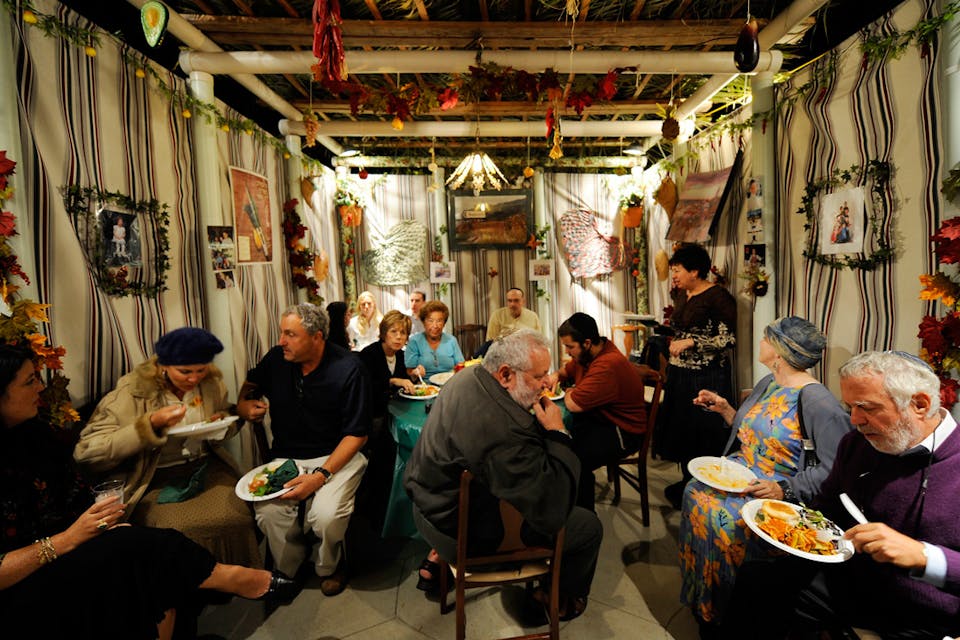
October 1, 2015
Whatever Happened to Gut Yontif? Why Jews Started Saying Ḥag Same’aḥ
The history of holiday greetings.
The eight days of Sukkot (seven in Israel) are, like those of Passover, of two kinds. The first, second, seventh, and eighth days of the holiday (the first and seventh in Israel) resemble the Sabbath in their festive meals with kiddush, the blessing over wine; their additional prayer service of Musaf; and their restrictions on work, travel, commerce, and other things. In Hebrew, they are known as yamim tovim, literally, “good days,” the singular of which is yom tov. The intermediate four days (five in Israel) lack these elements and are called ḥol ha-mo’ed, “the non-sacred part [ḥol] of the festive [literally, “appointed”] time [ha-mo’ed].”
Which raises the question: when two traditionally minded Jews meet on a yom tov of Sukkot or Passover, and then again on ḥol ha-mo’ed, do they exchange the same holiday greeting on both occasions, or two different ones?
I first found myself wondering about this many years ago when, saying ḥag same’aḥ, “happy holiday,” to someone on one of the intermediate days of Sukkot, I received the reply: “Today is ḥol ha-mo’ed. You should be saying mo’adim l’simḥah, not ḥag same’aḥ.” Was this person right? True, mo’ed and ḥag are near synonyms in the Bible, and the greeting mo’adim l’simḥah, “[May] festive times [be] for happiness,” is not very different from ḥag same’aḥ, but in matters of custom and ritual, vive la petite différence.